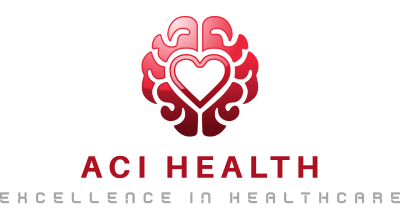
Employee turnover in the healthcare industry is at an all-time high. Hospitals, clinics, and private practices across the country are facing one of their biggest challenges yet: retaining skilled, compassionate, and committed healthcare professionals. While many factors influence staff retention, one powerful but often overlooked solution stands out—effective onboarding services.
In 2025, healthcare organizations must look beyond just hiring the right people. The real game-changer lies in how those people are welcomed, trained, and supported in their critical first weeks. Here’s how strategic onboarding services are transforming staff retention in healthcare—and why your organization can’t afford to ignore them.
Turnover in Healthcare: The Cost Is Higher Than You Think
Losing a healthcare worker isn’t just about replacing a name on a schedule. It’s a disruption to patient care, team morale, and operational efficiency. According to the 2024 NSI National Healthcare Retention Report, the average hospital loses $52,000 to $88,000 per bedside nurse turnover.
That number multiplies quickly when considering administrative staff, lab techs, and support teams. And the root cause? Often, it’s not salary or workload—it’s a poor onboarding experience that leads to early burnout or disengagement.
What Effective Onboarding Really Means in Healthcare
Forget outdated orientation videos or generic welcome packets. In the healthcare sector, effective onboarding services mean structured, role-specific, and culturally aligned programs that help new employees feel confident and connected from day one.
Effective onboarding should include:
- Clear communication of responsibilities and expectations
- Training on tools, systems, and protocols specific to their role
- Compliance education (HIPAA, OSHA, safety procedures)
- Soft skills training for patient communication and teamwork
- Ongoing check-ins and mentorship during the first 90 days
When employees feel prepared, supported, and aligned with the organization’s mission, they’re more likely to stay—and thrive.
First Impressions Shape Long-Term Loyalty
The first 30–90 days in a new role are make-or-break. During this time, employees form impressions about leadership, workplace culture, communication, and values. If these impressions are negative or unclear, it creates emotional disengagement—a top predictor of early resignations.
Onboarding services that create a positive first impression help new hires:
- Build trust in leadership
- Connect with peers and mentors
- Understand the “why” behind their work
- Feel seen, valued, and respected
This emotional connection drives long-term loyalty, especially in mission-driven fields like healthcare.
Boosting Competence = Boosting Confidence
Many healthcare professionals—especially nurses—report that the lack of role clarity and inadequate training are reasons for early burnout. When staff are thrown into critical situations without proper preparation, it’s a recipe for stress, errors, and eventually—resignation.
Effective onboarding services empower your team by:
- Providing step-by-step guidance for complex procedures
- Teaching communication protocols across departments
- Offering simulations and roleplay for patient interactions
- Encouraging questions and feedback from day one
The result? A more competent, confident, and calm healthcare worker—less likely to walk away.
Reduces Costly Mistakes and Increases Patient Satisfaction
A well-onboarded employee isn’t just more likely to stay—they’re more likely to perform well. When healthcare workers are trained properly from the start, they make fewer errors, communicate more effectively, and deliver higher-quality care.
This directly impacts:
- Patient safety and satisfaction
- Hospital readmission rates
- Risk of malpractice incidents
- Team efficiency and workflow
Organizations that invest in onboarding are often rewarded with higher HCAHPS scores, better online reviews, and more consistent patient outcomes—all of which help with long-term success and retention.
Mentorship and Ongoing Support: The Secret Sauce
An overlooked but essential part of onboarding is continuous support beyond week one. Assigning a mentor or “onboarding buddy” helps bridge the gap between orientation and full productivity.
This support system encourages:
- Informal learning and peer coaching
- A safe space to ask questions
- Early problem-solving before small issues grow
- A stronger sense of belonging and team spirit
Mentorship-driven onboarding programs have been shown to cut first-year turnover by up to 30%, especially in high-stress departments like emergency, ICU, and surgical units.
Scalable Onboarding Services = Organization-Wide Impact
Whether you’re a rural clinic or a multi-location hospital system, onboarding services can—and should—be scalable. The best programs use a mix of digital training, in-person coaching, and ongoing assessments to make onboarding consistent across every location.
Scalable onboarding helps:
- Standardize quality and compliance
- Reduce regional turnover differences
- Improve HR efficiency and reporting
- Align all employees with core values and vision
Platforms like ACI Health offer customized onboarding services that meet healthcare facilities where they are—bringing structure, compliance, and culture into a unified experience.
Final Thoughts
Retention in healthcare is not just about hiring better—it’s about onboarding smarter. In 2025, the healthcare organizations that win won’t be the ones offering the biggest signing bonuses. They’ll be the ones who build trust, competence, and connection from day one.
If your organization is struggling with turnover, look at your onboarding process first. A thoughtful, strategic onboarding program could be the missing piece that helps your team stay longer, care deeper, and perform better.
It’s not a cost—it’s your competitive edge.

Need Help?
FAQs
Have questions? We’ve got answers. Explore the most common queries below.
1. How does onboarding reduce staff turnover?
It helps new hires feel prepared, supported, and connected—reducing early burnout and resignations.
2. Is onboarding more important than salary?
Often, yes. Lack of support drives turnover more than compensation.
3. What should onboarding include?
Role training, compliance, mentorship, and regular check-ins.
4. Can onboarding be scaled across multiple locations?
Yes, modern platforms allow consistent onboarding across departments and facilities.
5. When will we see results?
Usually within 3–6 months through better retention and engagement.

